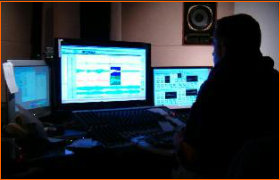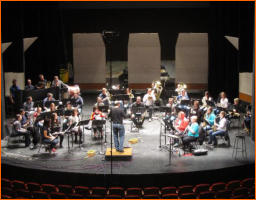
Musical understanding, musical
engagement; attention to detail
at all phases of production.
Location live projects are typically a “one
chance only” event. We prepare accordingly.
Location projects, live
or session, are our
specialty.

Introduction
Location recording, whether a live performance or session event, is always a challenge,
both in quality and budget. Even studio sessions can have their challenges.
MARS offers three key components in synergistic tandem: ear, experience, and
aesthetics. These work together to get you the finest possible recording, in just about
any setting.

Mobile Audio Recording Service 435 275 8981 info@mars-mobile.com
Specializing in fine recordings of classical and acoustic music since 2004.


Planning for Your Recording
We like to find out as much about you, your project, your players, the venue, and any
other special considerations well ahead of the recording date. Often this means we will
attend one or more rehearsals, and perform a walk-through of the venue (shown
above: a walkthrough of the Arlene Schnitzer concert hall in Portland, Oregon). We
look for any potential problems, such as outside noise, inside noise, and so on. We also
try to make the friendly acquaintance of the building manager and stage hands. Having
those people on our side is invaluable.
Generally, we’ll come away with a good idea as to what equipment is required to do the
best job, and how to work within any constraints. From there, we develop a plan for an
orderly and efficient deployment of equipment on the day of the event. We do include
some margin for the unexpected. However, we do caution against large changes in
your event without giving us advanced warning.
The Recording
The day has arrived; we’ve loaded in our gear, deployed microphones and cables,
made all the interconnections, and everything is ready to go. Here’s where all that pre-
planning has paid big dividends. And, we’re all set with a modular system that can be
quickly reconfigured if necessary. Twin machines record the same audio data (one
machine backs up the other); and, the entire kit is supported by an uninterruptable
power supply.
Ising Choir, Beaverton, Oregon
Old Aurora Colony Session, Portland, Oregon

Post Production
Here’s where we do editing, mixing, and if appropriate to the project, various
performance corrections. As soon as possible, audio data from the recording date is
loaded into the digital audio workstation. We’ll make a basic mix and take a quick
listen, taking notes as we go. We’ll probably have a get-together to see what you’d like
to have done in this phase of the process.
Many little corrective adjustments can be made in pitch, timing, and togetherness.
Editing, at least for session projects, largely consists of taking the best parts from each
take recorded and then assembling a best take.
The scope of what can be done with a modern digital audio workstation is virtually
unlimited. That’s both good and bad; we stay as “good” as possible by using the tools
appropriately. We always keep a musical ear close to the process to make sure we’re
not trading music for technology. (It is possible to “overcorrect” in the post-production
phase. The mistakes get fixed, but the soul of the music has fled. We’re generally quite
good at getting the best from both worlds.)




























